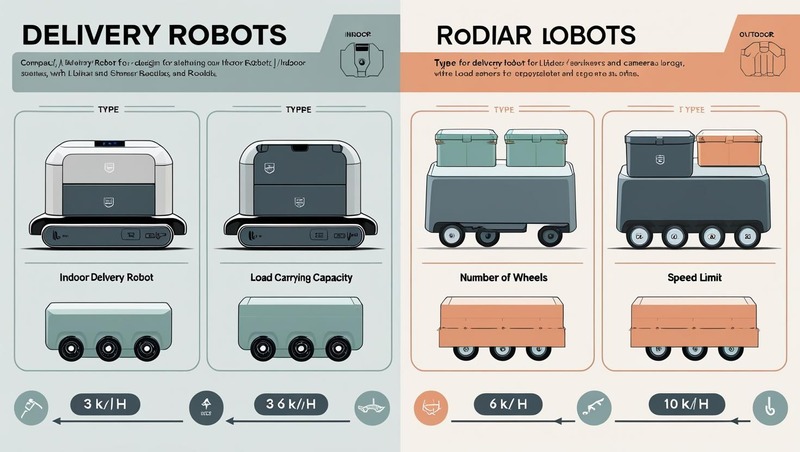The delivery robots market is projected to reach USD 3,236.5 million by 2030 from USD 795.6 million in 2025 at a CAGR of 32.4% during the forecast period. The surge in online shopping and food delivery services creates high demand for fast, reliable, and scalable last-mile delivery solutions.
One of the key developments set to transform the delivery robots market is the adoption of 5G connectivity and edge computing. This advances the processing of data in real-time and ultra-low latency communication, which facilitates instant decision-making by autonomous delivery robots in response to their surroundings. All this is made possible by 5G, allowing robots to seamlessly connect with cloud infrastructure and other devices, increasing their ability to navigate crowded urban spaces efficiently. Edge computing takes it to the next level by processing locally, reducing reliance on core servers, and reducing the response time. Together, these technologies allow for smoother functioning, improved safety, and more reliable delivery services, forming a revolutionary step towards the logistics sector.
Download PDF Brochure @ https://www.marketsandmarkets.com/pdfdownloadNew.asp?id=263997316

In terms of type, outdoor delivery robots are expected to grow with the highest CAGR during the forecast period. Outdoor delivery robots possess a huge potential for growth driven by strong drivers. Growing demand for effective, contactless delivery modes in urban centers is compelling industries such as food & beverage, retail, and e-commerce to adopt the technology. Partnerships between delivery platforms and robot manufacturers, such as Uber Eats partnering with Serve Robotics in Miami and Grubhub with Avride on campus, are expanding the use of these robots. Other technological innovations, such as artificial intelligence, edge computing, and machine learning, provide greater capacity to navigate complex spaces safely and economically. These advancements collectively put outdoor delivery robots in place for tremendous growth in the next few years.
Up to 10 kg capacity delivery robots are expected to see the highest growth in the autonomous delivery segment. The segment is expected to see the highest compound annual growth rate (CAGR) during the forecast period due to heightened demand for seamless, contactless delivery solutions in urban areas. Bots in this weight category are especially best for the delivery of smaller packages, including food, groceries, and e-commerce orders, thus making them highly flexible and applicable across different industries. The small size of the bots ensures easy movement through busy cityscapes with minimal effort, improving last-mile efficiency. Furthermore, their affordability and scalability make robots an ideal choice for companies looking to automate delivery and enhance customer satisfaction.
The US is at the top of the robotics market because the country’s government funds numerous innovative robotic research projects with millions of dollars; many of them are defense initiatives. Yet, strict regulations and rules for using these delivery robots have been the largest obstacle to the expansion of the delivery robots market. Five states in the US have enforced strict regulations on operating delivery robots. San Francisco has recently prohibited the use of delivery robots due to various complaints from pedestrians. Apart from that, there have been instances where robots were vandalized by unidentified individuals. In the past few years, the US has seen numerous companies with ground delivery robot solutions. A few examples of American key players in ground delivery robots include Nuro, Boxbot, Serve Robotics, and Savioke. These players have technologically superior products in the delivery robot industry, which are augmented with autonomous technologies like AI and machine learning to make the last-mile logistics process more cost-reducing.
As per the US Census Bureau, the population in the US aged 65 years and older will be approximately 98 million by 2060. Therefore, the increasing aging population of the US is expected to create demand for delivery robots in the food & beverage and healthcare industries.
Technological advancements in sensor technology have allowed delivery robots to navigate around in complex environments at low costs. Enhanced with 5G connectivity and edge computing, there is improved real-time data processing, allowing decisions to be made faster and operational efficiency to be increased.
